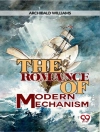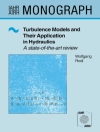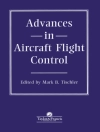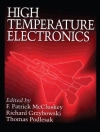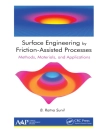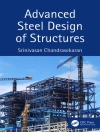This book addresses the contributions made by analytical chemistry to the characterisation of 18
th and early 19
th Century English and Welsh porcelains commencing with the earliest reports of Sir Arthur Church and of Herbert Eccles and Bernard Rackham using chemical digestion techniques and concluding with the most recent instrumental experiments, which together span more than a hundred years of study. From the earliest experiments which required necessarily the sacrifice of significant portions of each specimen, which may already have been damaged , to the latest experiments which needed only microsampling or the non-destructive interrogation of valuable perfect specimens a comprehensive survey is undertaken of more than twenty manufactories of quality porcelains. The correlation is made between the quantitative elemental oxide determinations of the scanning electron microscopic diffraction and Xray fluorescence data and the qualitative molecular spectroscopic Raman data to demonstrate their complementarity and use in the holistic forensic assessment of the origin of the fired procelains ; this will form the groundwork for the adoption of analytical techniques for the attribution of unknown or questionable procelains to their potential source factories . The book will also examine the perception of what constitutes a porcelain and its definitions and examines the assignment of porcelains to types which currently employs the definitions of hard paste , soft paste , hybrid , magnesian and bone china from the conclusions derived from the analytical data and a consideration of the raw materials employed in their manufacturing processes. During the discussion of this analytical evidence several themes and protocols have been established for its utilisation in the potential identification of porcelains and several case studies undertaken for this purpose are cited. The book will be of interest toanalytical scientists , to museum ceramics curators and to ceramics historians.
Mục lục
Chapter 1: Porcelain and its Composition.- Chapter 2: The Development of British Porcelain from the 18
th into the 19
th Centuries.- Chapter 3: Appraisal of the Earliest Chemical Analyses of Sir Arthur Church (1894) and of Herbert Eccles & Bernard Rackham (1922). Chapter 4: Analytical Studies of Porcelains: Correlation with the Holistic Information about the 18
th and 19
th Century Factories.- Chapter 5: Analytical Compositional Data and the Interpretation of the Data Acquired from Elemental Oxide.- Chapter 6: The Molecular Spectroscopic Analysis of Porcelains.- Chapter 7: The Earliest Porcelain in Europe… Meissen?.- Chapter 8 : The Role of Analytical Data in the Holistic Interpretation of Porcelains.- Chapter 9 : The Future for the Holistic Analysis of Porcelains.- Chapter 10: Summary and Conclusions.- References.- Appendix I: What Quantities of Raw Materials were used in a Typical Kiln Charge?.-Appendix II : A Combined Analytical Study of the Nantgarw Porcelain Glaze on Shard No. NG6 and Others: Implications for Nantgarw Porcelain Attribution.- Implications for the History of Nantgarw Porcelain.- Raman Spectroscopy of Glazes : Potential for the Dating of Porcelain Substrates.- Appendix III:William Billingsley and His Pursuit of Perfection in the Manufacture of Highly Translucent Porcelain.- Appendix IV : Analysis of Pigments on Porcelains.- Glossary.- Index.
Giới thiệu về tác giả
Howell Edwards is Professor Emeritus of Molecular Spectroscopy at the University of Bradford. He read Chemistry at Jesus College in the University of Oxford and after completing his B.A and B.Sc. degrees he studied for his doctorate there and then took up a Research Fellowship at Jesus College, University of Cambridge. He joined the University of Bradford as a Lecturer in Structural and Inorganic Chemistry, becoming Head of the Department of Chemical and Forensic Sciences and was awarded a Personal Chair in Molecular Spectroscopy in 1996. He has received several international awards ( Sir Harold Thompson Award ; Charles Mann Award of the FACSS ; Boricky Medal of Charles University Prague ; Norman Sheppard Award of the Infrared and Raman Discusion Group ) in a spectroscopic career which has resulted in the publication of 1300 research papers in Raman spectroscopy and the characterisation of materials, along with six books on the application of this technique to art, archaeologyand forensic analysis. He has had a lifelong interest in the porcelains of William Billingsley, especially those from the Derby, Nantgarw and Swansea china factories. He has authored three major books on Nantgarw and Swansea Porcelains: Swansea and Nantgarw Porcelains: A Scientific Reappraisal, Nantgarw and Swansea Porcelains: An Analytical Perspective and Porcelain to Silica Bricks: The Extreme Ceramics of William Weston Young, 1776-1847, all published by Springer, Dordrecht. He has also produced several monographs on the personalities involved in these factories: William Billingsley – The Enigmatic Porcelain Artist, Decorator and Manufacturer, Nantgarw Porcelain – The Pursuit of Perfection, Swansea Porcelain – the Duck-Egg Translucent Vision of Lewis Dillwyn and Derby Porcelain: The Golden Years, 1780-1830. Howell Edwards is Honorary Scientific Adviser to the de Brecy Trust on the analytical scientific evaluation of artworks and paintings.


